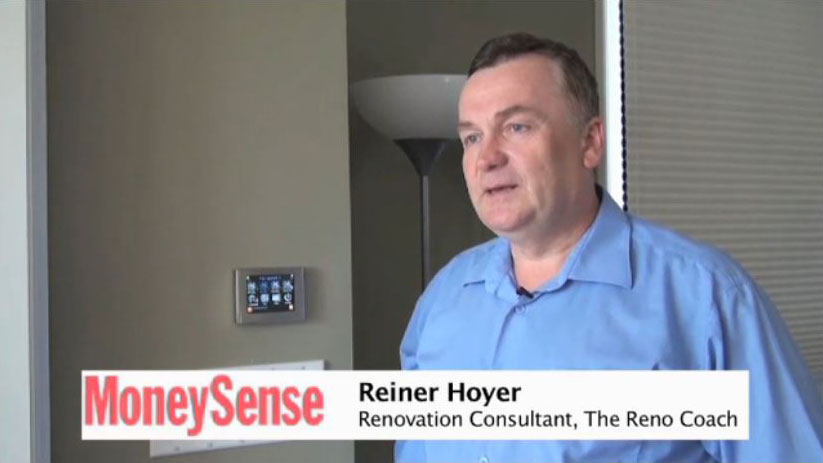Reiner in MoneySense
Walk through an energy efficient home
Imagine owning a home that doesn’t need a furnace. It can be done, and for less than you’d expect.

Imagine living in a home that is so efficient it doesn’t need a furnace. Unless you’re living in the tropics it sounds like fantasy, right? Tell that to Reiner Hoyer. The renovation consultant recently transformed his 1950s-style bungalow into a two-storey home in the north end of Toronto that is a model of energy efficiency and style—and no it doesn’t have a furnace.
It sounds hard to believe, but Hoyer thinks his home is the wave of the future in Canada. If anything, he says, Canada’s behind the curve. Hoyer’s home is based off the “passive house” standard developed in Germany. The standard puts emphasis on upgrading the building envelope, or exterior structure of the building, to make sure it’s well insulated and airtight. Buildings using this approach have seen a drastic reduction in the amount of energy they use for heating or cooling.
While there are few passive homes in Canada, there are more than 20,000 houses in Germany using this technology. And there will be many more soon. A European Union resolution passed in 2008 calls on each member state to adopt the passive house standard by 2016 for all new construction and major renovation projects.
“We’ve been building houses backwards our whole life,” says Hoyer. Normally, pipes and air ducts start to get added to a home once the framing is done; but in a passive house the mechanical and insulation is kept completely separate. And the only way to do that is to fully insulate the house first, right down to the floor and then fit the duct work and pipes into the house.
Of course, building an airtight home is only the beginning. Triple-paned windows, solar panels and an innovative heat recovery system keep Hoyer’s house comfortable year round. Hoyer has even cut his water bill by installing a rainwater cistern in his backyard to supply his toilets.
The cost to build a home like this isn’t as high as you might think. Hoyer estimates features like the ones in his home would add about 6% to 7% to construction costs. “It’s a no brainer,” he says. “Going forward this is the cheapest house to own.”
The payoff has been dramatic. Despite more than tripling the size of his home, Hoyer’s utility bills are about $1,200 for the year, a third of what he spent on his old bungalow, and less than half the national average.
See how it all comes together in this video.
by Mark Brown from MoneySense
October 5, 2012
